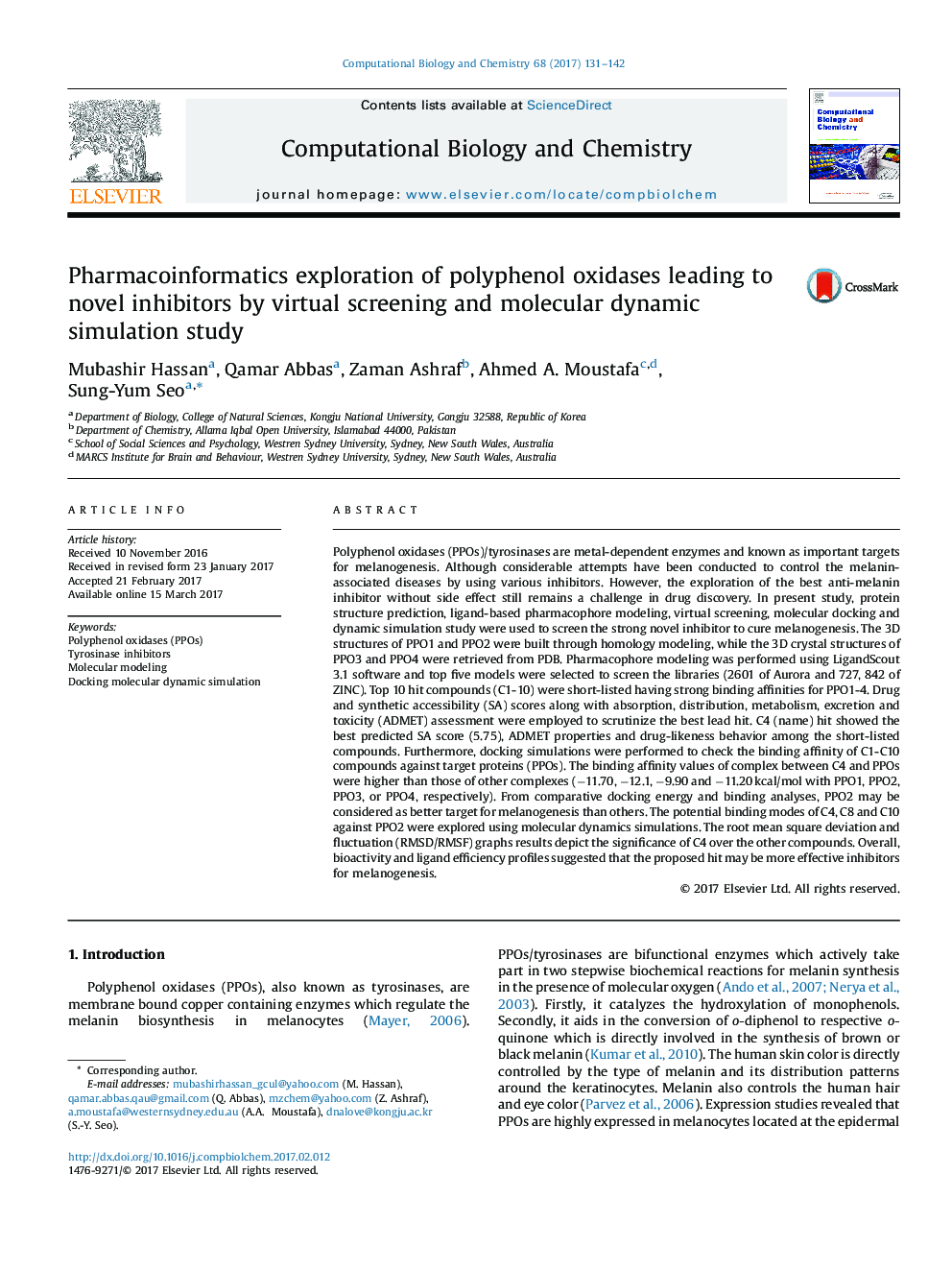| Article ID | Journal | Published Year | Pages | File Type |
|---|---|---|---|---|
| 6451333 | Computational Biology and Chemistry | 2017 | 12 Pages |
â¢The 3D structures of PPO1 and PPO2 were built through homology modelling, while PPO3 and PPO4 were retrieved from PDB.â¢Pharmacophore modelling was performed using LigandScout 3.1 software and top five models were selected to screen the libraries.â¢Best screened compound further evaluated through molecular docking and dynamic simulation approaches.
Polyphenol oxidases (PPOs)/tyrosinases are metal-dependent enzymes and known as important targets for melanogenesis. Although considerable attempts have been conducted to control the melanin-associated diseases by using various inhibitors. However, the exploration of the best anti-melanin inhibitor without side effect still remains a challenge in drug discovery. In present study, protein structure prediction, ligand-based pharmacophore modeling, virtual screening, molecular docking and dynamic simulation study were used to screen the strong novel inhibitor to cure melanogenesis. The 3D structures of PPO1 and PPO2 were built through homology modeling, while the 3D crystal structures of PPO3 and PPO4 were retrieved from PDB. Pharmacophore modeling was performed using LigandScout 3.1 software and top five models were selected to screen the libraries (2601 of Aurora and 727, 842 of ZINC). Top 10 hit compounds (C1-10) were short-listed having strong binding affinities for PPO1-4. Drug and synthetic accessibility (SA) scores along with absorption, distribution, metabolism, excretion and toxicity (ADMET) assessment were employed to scrutinize the best lead hit. C4 (name) hit showed the best predicted SA score (5.75), ADMET properties and drug-likeness behavior among the short-listed compounds. Furthermore, docking simulations were performed to check the binding affinity of C1-C10 compounds against target proteins (PPOs). The binding affinity values of complex between C4 and PPOs were higher than those of other complexes (â11.70, â12.1, â9.90 and â11.20Â kcal/mol with PPO1, PPO2, PPO3, or PPO4, respectively). From comparative docking energy and binding analyses, PPO2 may be considered as better target for melanogenesis than others. The potential binding modes of C4, C8 and C10 against PPO2 were explored using molecular dynamics simulations. The root mean square deviation and fluctuation (RMSD/RMSF) graphs results depict the significance of C4 over the other compounds. Overall, bioactivity and ligand efficiency profiles suggested that the proposed hit may be more effective inhibitors for melanogenesis.
Graphical abstractDownload high-res image (179KB)Download full-size image
